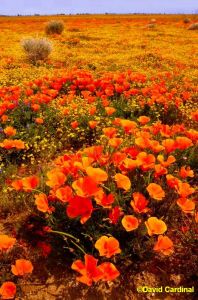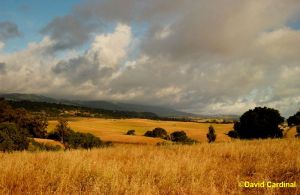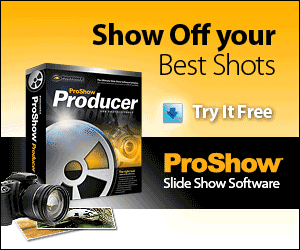Cardinal Photo Safaris Update: |

Grizzly bear female
Alaska bear safari
|
Alaska Grizzly Bear & Puffin trips, July 2009:
(These trips always fill up, so make your plans soon!)
Our 2008 sessions all sold out but we've just announced our two trips for 2009, so learn more or sign up soon. We'll have plenty of Alaskan Brown "Grizzly" Bears, as well as visit rookeries for Horned Puffins, Tufted Puffins, Common Murres and Kittiwakes. We're also likely to have some good Bald Eagle photographic opportunities and of course scenic shots of mountains, coastline and lovely flowers. This is a great trip for couples or non-shooting companions as the lodge is in a beautiful setting on the coast with plenty of opportunity for other activities. |
|
Africa : Botswana, November 14-26, 2009
(10 photographers maximum --
our 2008 trip SOLD OUT so book early)
Our trips feature plenty of mammals & birds. We'll
see lions, elephants, giraffe, leopards, cheetah and quite a few
varieties of antelope along with several dozen other species of
exotic animals. For
more details or to reserve your space now. |
|
Burma and Cambodia, December 2009:
We're excited about returning to Burma (Myanmar) and Cambodia. The main trip will be divided between the temple areas in Cambodia (especially the Angkor temple complex including Angkor Wat) and Burma (including historic Mandalay and the plain of temples at Bagan, as well as the capital Yangon, nee Rangoon). Learn more. We'll also have an optional post-trip extension to Laos, featuring Vientiane & Luang Prabang.
We just finished a second very successful 2007 trip (and about to head off for our 2008 trip) and are ready with what we think will be an even better itinerary for next December, 2009. Learn more about the trip now. |

Crested Caracara
South Texas Safari, 2007
|
South Texas Birds, April 12-18, 2009
(6 Photographers Maximum, filling up quickly)
After a great safari this year I'm anxious to get back to "The Valley" in south Texas and join a few of you to really focus on bird photography for a week again next year. There is no better way to improve your shooting skills, hone your flight shot technique and come home with lots of great images than by spending a week with us at these awesome Lens & Land properties.
We have some great upgrades for 2008, including luxury accomodations at a brand new game lodge close to the ranches. The small trip size (maximum 6 shooters), private ranches, and full service structure (all your local transportation, room, meals and drinks are included!) make this the premier trip to South Texas for bird photography. Learn more or get your deposit in now. |
|
|
Picking your workflow: 8-bit vs. 16-bit
Often locked in what appears to be a life or death struggle the adherents to the 8-bit workflow school and the 16-bit workflow school paint extreme pictures of your future based on your choice of bit-depth. Over-simplified the arguments go more or less like: Use 8-bits because your files are smaller, they process faster, and you'll never notice the difference, vs. Use 16-bits because your camera can capture nearly that much detail, your nifty new computer won't run much slower, you might see the difference, and if you don't see the difference now you sure will when that really cool new Daylight Reality display is invented sometime really soon now.
So what is the reality? The truth is that, like all these choices, it depends. For 99% of all images and 99% of all uses, 8-bits in Photoshop is plenty. However, if you're going to be doing a lot of fine art printing on high-end printers, particularly if you use fancy wide-gamut colorspaces like those we describe below, you'll sleep better at night knowing that every possible bit of your original image has been preserved for posterity.
In my case I normally process in 8-bits. It makes things go faster and take less space. And the difference is normally invisible--plus most output devices can't take advantage of any more in any case. Finally, since I keep the original Raw file anyway I could always go back and re-process it if I really wanted to get something more out of an image at some point in the future. But for images with subtle tonal gradations that I know I'm going to print in very large sizes then I sometimes export 16-bits from my choice of Raw converter and
One of the other confusing issues about bit depth is the confusion about our cameras being 12-bits. Logically, most of us would assume that since our D-SLRs capture 12-bits of information that we'd want 12 or more bits to fully represent the colors our camera saw. However, the 12-bits of our camera sensors are linear so they represent the linear light input from 1 to 4095 "photons" per photosite (pixel). But once the raw data is encoded into RGB it is logrithimic (that's the simplified definition of gamma) so that 256-values (8-bits) can be used to cover the entire range of your camera's sensor. Obviously there are some tradeoffs involved, so keeping the data in 16-bits provides the maximum amount of information, but for most purposes the gamma encoded 8-bit spaces can cover the range of your camera.
sRGB vs. Adobe RGB vs. Pro Photo RGB

|
There is another dynamic that works almost opposed to your bit depth. The 8 or 16-bits of data in your image describe all the colors from Black (Red = 0, Green = 0, Blue = 0) to White (R,G,B = Maximum). But the definition of black and white depend on your choice of colorspace. The larger the colorspace (also described as the size of the color gamut) the wider the range of colors it describes. So in principle a very large gamut colorspace (Pro Photo RGB is one of the best known) would seem to be ideal. But the larger the range covered by the colorspace the less color detail your 8-bits (256 different color values) can retain. So unless you're willing to live with the larger size and slower speed of a 16-bit workflow, a smaller color space is probably advantageous as a way to retain color detail.
Caption: Bright reds like the Poppies in this photo are supposed to be among the colors difficult to represent in Adobe RGB. But I couldn't see any difference in processing this poster sized image using either Pro Photo or Adobe RGB. Using a custom output profile did make a difference, however.
|
So which space should you use? If you want the ultimate in image quality and are willing to put up with large file sizes and slower processing, then a 16-bit workflow with a large working space like Pro Photo RGB is a great choice. This is the the workflow used by some of the purist of Photoshop gurus like Jeff Schewe.
However, if you're processing thousands of event images a week and rushing them off to a lab which wants sRGB anyway, an 8-bit sRGB based workflow will be the most productive. Of course if you start by shooting Raw images and keep them around you've hedged your bets as you can always go back and do more sophisticated or extenisve processing from the Raw files.
The most practical choice for all around photography lies in the middle. An 8-bit workflow with Adobe RGB (or the slightly more tweaked Bruce RGB if you prefer) is a solid performer for all current D-SLR images and desktop printers. It's not ideal for purists as there are colors your D-SLR can capture (in raw mode) and your printer can print (if you have a high-end printer) that are beyond the bounds of Adobe RGB, but for 99% of your images you'll never see a difference.
One quick trick you can use to keep your 8-bit Adobe RGB workflow intact for the 99% of the images where it works is to look at the histogram in your Raw converter. In Camera Raw, for example, you can see the effect of using different output spaces on your histogram. If using Adobe RGB your conversion causes clipping you can shift to Pro Photo RGB for that image. You may want to also output that image in 16-bit, as the much larger colorspace of Pro Photo RGB begs for the added precision given by 16-bits to cover the entire space.
What about LAB?
LAB is one of the most powerful ways to look at color. By separating Luminosity from colors, and representing color channels in opponent color form (Red vs. Green, Yellow vs. Blue) much like part of the human visual system does LAB allows us to create dramatic changes in our images with little work. I've written extensively on how you can do this after getting my eyes opened by Dan Margulis' excellent book: Photoshop LAB Color.
But LAB isn't really much good as a way to represent our images while we're not working on them. It can't be directly viewed or printed (at least not on today's output devices). There is some controversy over whether those who convert their images to and from LAB should use a 16-bit workflow to minimize any possible side effects. I've done it both ways and have never had a visible problem from an 8-bit workflow with a photograph. Apparently computer generated gradients or graphics do require 16-bits to survive the conversions, but frankly I don't work with those so I haven't worried about it.
Let's hear from you!
Let us know what is working for you in our Photo forums, where we've had a number of active discussions on digital workflow choices depending on the needs of the individual photographer.
Event News

We auctioned off this print to help raise
money for open space preservation
|
I had a great time speaking at the Wildlife Photographers of Silicon Valley on October 16th about Photographing on Safari illustrated by plenty of cool safari photograhy. They're a wonderful group of active photographers founded by Monte Smith and his wife Laurie. The art sale and auction Nature's Inspirations, a fund-raiser for the Committee for Green Foothills--was also a tremendous success. We were able to share (and sell) a number of pieces as well as help educate many of the attendees about the endangered species in many of the images we displayed.
|
Global Warming: How it affects you & an action you can take
Most people are now convinced that our environment is changing and the climate is getting warmer. Whether you believe humans are the cause or we are just witnesses, there is a lot of good science that shows our emissions of "greenhouse" gases are making things worse. That makes wildlife photography--or frankly any kind of ecotourism--a little tricky. Here we are setting out to learn more and teach more about our natural world but to do that we often travel by car, train, boat or plane--all of which emit greenhouse gases. An interesting option to help with this conundrum are emissions credits. By donating to one of several non-profit groups such as carbonfund.org, your dollars will be used to fund projects that are designed to reduce greenhouse gas emissions somewhere.
I'm not completely sold on the concept, as it seems far too much like buying our way out of a problem instead of actually changing our behavior--and I think it could send an unfortunate signal to the developing countries that rather than reduce emissions they should just work to be rich enough not to have to--but if you're going to travel anyway then this approach does at least provide some offset. We'd like to get your opinions on the issue and the concept of offsets. In particular we're consdering offering the option of applying a portion of participants' safari fees to offset the emissions created by the safari. Let us hear from you in the Digital Cafe section of our Photo forums. In particular if you have some good information on which of the offset credits are the most likely to be effective (it's easy to pay someone to plant a tree, for example, but harder to check to see if the tree is still there in 20 years) please let us know.
DigitalPro 4.1 Released
DigitalPro for Windows 4.1 has been released. It features support for Adobe DNG format, JPEG 2000, plus 1-click image enhancement filters ColorMagic™ and PortraitMagic™. It is available for download at Pro Shooters website. The upgrade is free to all licensed users of DigitalPro4.
Support our Site Sponsor, ProShow:


|
|
|
|








